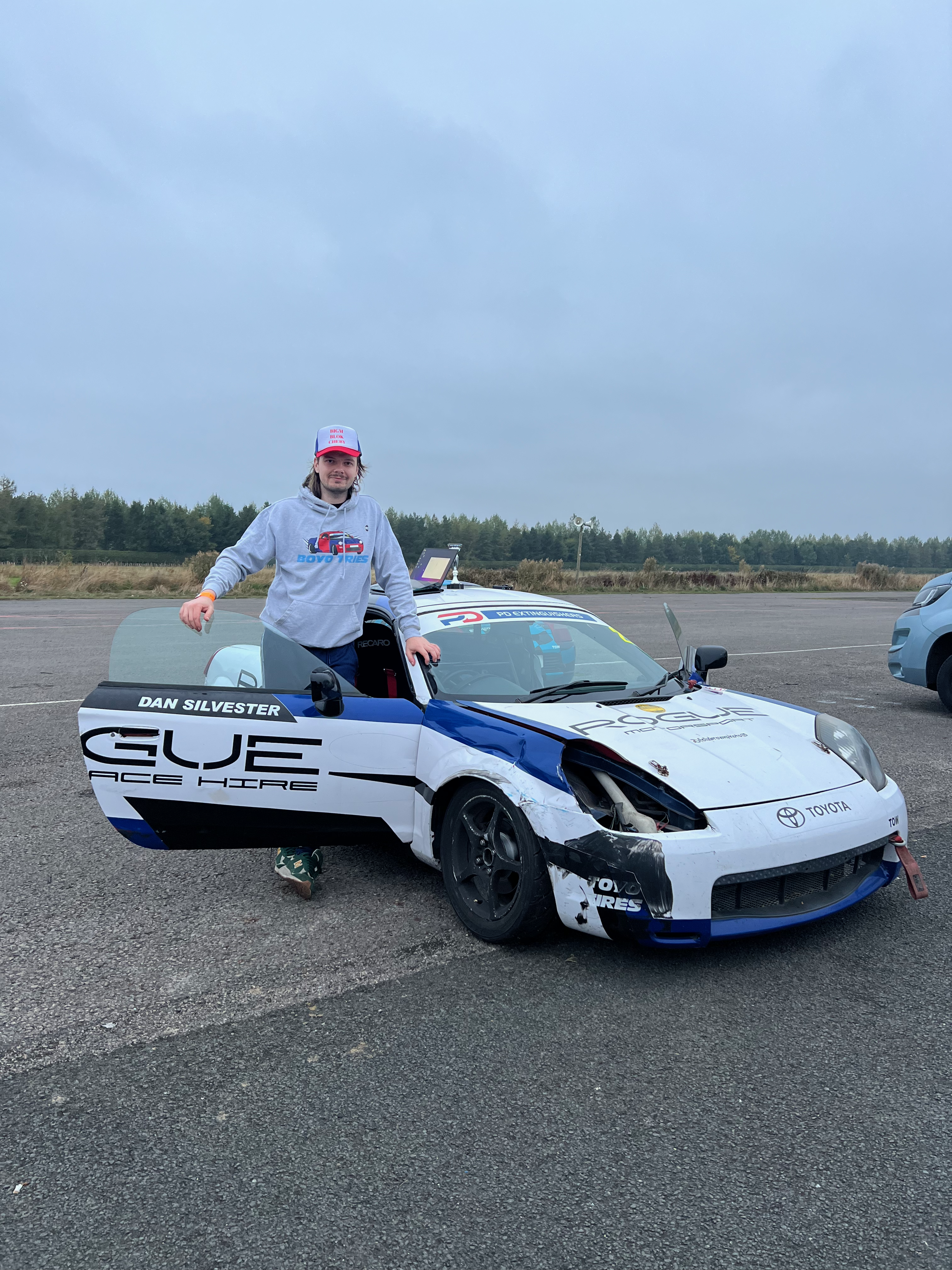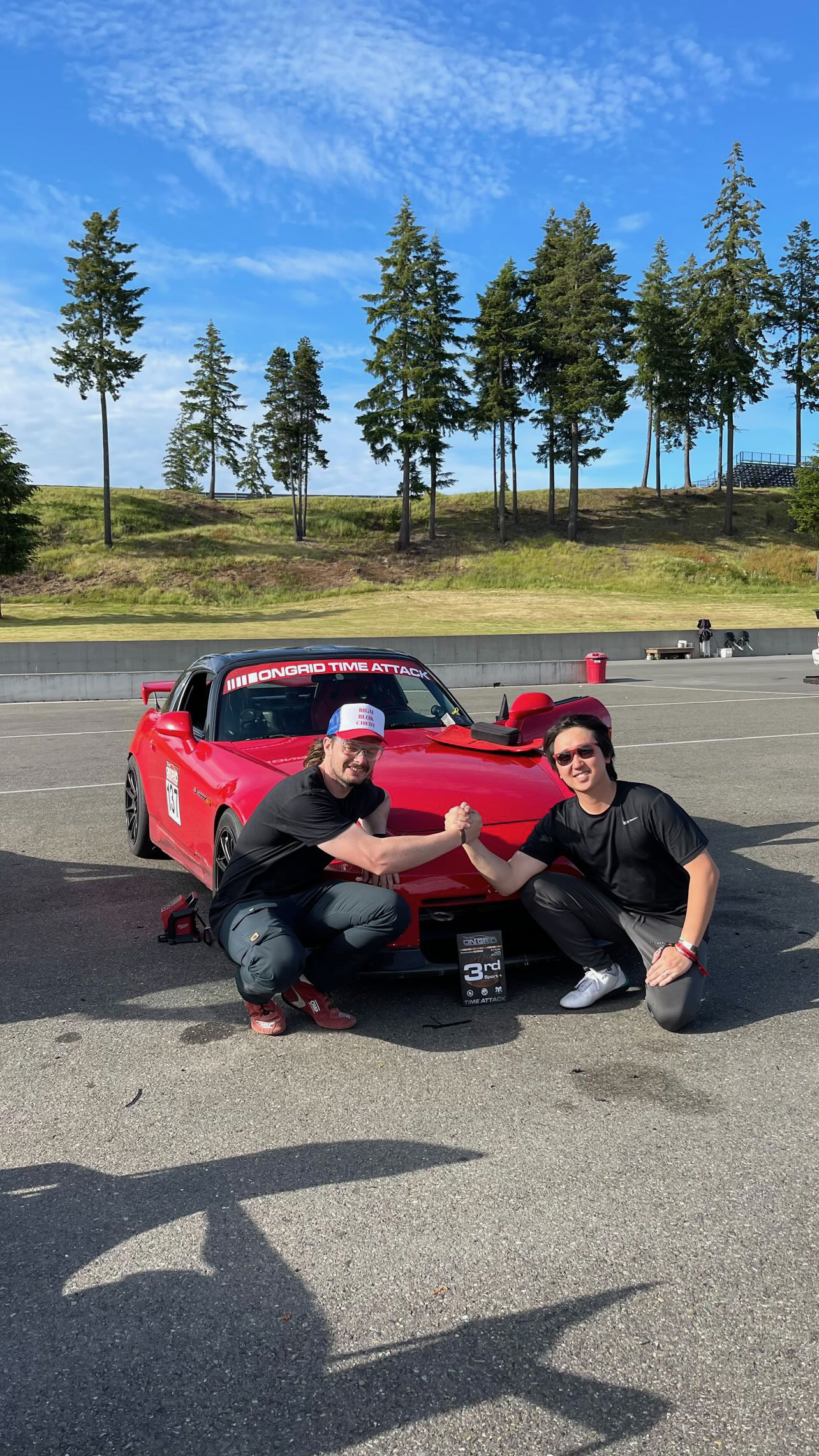
Finding The Limit
Share
When I was 16 and ripping around on a scooter there were more than a couple of occasions where I’d fallen off, usually while trying to wheelie or corner too quickly. I’d hurt myself a few times but luckily never anything serious. When I got my licence to drive the only thing that made contact with the road was my tyres. I wasn’t involved in any accidents other than the occasional graze with the pavement. I remember driving home one night after fitting some rather exotic looking “Kawasaki Green” OZ alloys to my Corsa SRi, only to clip one on a curb before I got home. On reflection the curb was probably doing me a favour but I was very sad at the time.
Like a bowling ball hitting the bumpers there were a few times where I’d hit the curb, but that was usually as bad as it got. For the first 5 or so years of my driving life, I can’t think of any occasion where anything significant happened.
I started track driving regularly in 2014. The Integra was a great base for it. I didn’t buy it to do this but it did it well. Being at a racing circuit in my own car seemed like a crazy concept. I’m in a place where I can legally drive as quickly as I want and i wasn’t going to waste it. Spins and off track incursions became commonplace, then dead stops in places you’re not supposed to be happened shortly after. I’d crashed.
Driving your car on track doesn’t mean that you will damage it. You can go, drive around at your leisure, ensuring yourself and your wallet make it back home without harm. You see this happen a lot especially in expensive cars. For these people the thrill is making it out alive. Completing the day with your investment intact.
For me the thrill is driving fast. That’s all I wanted to do. If you want to drive fast, and be the fastest, you’re going to make mistakes. If not, you probably aren’t driving fast enough. I didn’t have any knowledge about circuits before driving on track. I’d heard of the big ones, Silverstone, Donington etc, but never considered I’d be driving them one day. Another circuit I hadn’t heard of was Cadwell Park, but that was soon about to become one of my favourites.
I’ve crashed cars at Cadwell Park more than any other circuit. The Integra twice, and the MR2 once. Those are moments where damage has happened, where the safety barrier has had to interrupt the cars trajectory after losing control. I remember all three incidents well.
The first happened in the morning of a trackday. I can’t recall the specifics but there was a reason why I needed to go steady on my out lap, perhaps some new brake pads to bed in or something like that. I ended up going out with Josh behind me in one of his Civic’s. Blue EM1 if I’m not mistaken, which was K20 powered and I was still with my original B18. Our first lap around the Gooseneck, a corner that catches out many drivers, I lost control of the rear, span around on the grass, and ended up grazing the barrier on the outside. There was damage to my door, wing mirror, and front wing. Nothing too serious, but it was the first time I’d damaged the car so I was quite sad about it.
A year or so after that, the car now had a K20 engine, and was carrying around a bit of notoriety given its Instagram presence. This often led to people wanting to come out with me for laps. Back in the day I’d have no problem with this. Often the fun of a trackday is only amplified by a passenger. These days I see it as a hindrance, you might have noticed that most of my cars only have one seat. Well this is why…
It was raining at Cadwell but we were still out having fun. This was a time where my balance between confidence and skill was quite heavily tipped in one direction. Having a fast car on trackdays will multiply that. Fast cars don’t make fast drivers. I had a passenger with me and messed up my braking at one of the fastest parts of the track, Park straight. This was way before I even considered what a wet line was. I again lost control of the car and was heading for the barrier, this time head on. I managed to slow the car down and steer away as best as I could but contact was imminent. Luckily by the time I got there it wasn’t too bad. I was able to continue and drove down to the next marshal post but there was all sorts of noises coming from under the car so I decided to get a tow back.
After having an incident like that you either need to park up and wait for assistance, causing a red flag and making everyone hate you. Or you can try to drive the car back to the pits, potentially dropping fluids on track, which will cause a red flag and make everyone hate you. I had to make that decision for a third time when I crashed the MR2 there. 7 more years of driving experience behind me wasn’t enough to save me from another trip to the barriers. This time it was on the exit of Charlies 2, I lost the rear of the car and wasn’t quick enough to grab it. I pirouetted, making a full 360 degrees before hitting the inside tyres head on. This was the first time I’d been truly thankful for my Hans device. Watching the onboard you can really see how helpful it was protecting my neck.
I had another crash in the DC2 at Snetterton. This one was much less serious than the Cadwell incidents, but I did lose my bumper. In the wet again, I lost the rear end on the final corner wiping out a marker at the same time. The Nürburgring crash was pretty bad of course, but we can blame that one on my mechanic I think.
There were several bumps and scuffs in the E36 when I started drifting. Nothing that you would consider a crash, especially not in that scene. The MR2 had its fair share of collisions but only really the Cadwell one was wholly my fault. Same for the Civic, and notably Darkside Development’s Audi TT which I was involved in 2x quite big accidents in, neither my fault.
My idea about this blog is to promote the idea that accidents do happen if you want to drive fast. You don’t have to watch the F1 for long before seeing how often the supposed best drivers in the world manage it. I don’t think you should plan for it. Nobody wants to crash. You could spend years in a beater track car then crumple your nice car on its first outing. It’s important to be aware that it can happen, and when it does, acknowledge what you could have done to avoid it.
You will always have excuses. I’m sure we all know someone who no matter what happens to them, they’ll be able to excuse it one way or another. You can’t let yourself think like that after an accident. Even when there are 3rd parties involved you need to consider the full picture. Perhaps I wouldn’t have been here, if they weren’t there, sure. Accidents on track may be from many different factors, but as a driver it is important to take responsibility. That isn’t to say you should admit fault… but if you were the only person involved, there will be lessons to learn.
Some of the common excuses I hear for crashing are things like, my tyres/brakes were cold. I’ve seen people comment this a lot to excuse other drivers making mistakes. This is probably the most common reason but it is not good enough. A car will drive differently when the tyres aren’t in their operating window. It is for you to manage that. What’s the quickest way to warm up tyres? By driving fast. Just don’t lean on them too much, don’t expect them to react now how they did at the end of your last session. It isn’t rocket science.
Another common excuse is that of track conditions changing. Perhaps it is wetter now than it was before, or did someone drop fluids? I’ve been in races where both of these have happened, sometimes even at the same time. It is sketchy, but this should only catch you out if you are driving at 10/10ths. If you are truly driving to the absolute maximum of your ability, or the car's ability, or both, then this excuse becomes more permissible. But you are rarely there other than perhaps in qualifying, or maybe if you are competing in time attack style events.
Most of our driving should be spent at around 7/10ths. If you’re unfamiliar with this expression, see it as a scale of effort. 10/10ths would be absolutely balls out, where the only thing you’re concerned about is the lap you are currently on, or passing the car you’re battling with. Even in shorter sprint races you won’t spend a lot of time there. 1/10ths would be something similar to driving home from the gym after a heavy leg session. If you are driving with nothing in reserve, you are driving dangerously. You make yourself susceptible to being caught out by suddenly changing track conditions. You are not aware of your surroundings, and may not have noticed that the rain is getting heavier, or that car a few corners ahead seems to be smoking.
Making mistakes because the track condition changed is still your responsibility. External factors could be the reason the conditions aren’t the same, but you are in control of your vehicle. This is when being in a battle is most fun, but most dangerous. Who’s willing to push their car that little bit further despite neither driver knowing how much grip there will be at the next corner. But still, it must remain true that we are the ones in control. We chose to not take precautions, and accepting this will make you a better driver.
Having that little bit in reserve is something I learned from the Nordschleife. If you go flat out there, you are asking for trouble, and that usually ends with a sizable dent to your bank balance. You shouldn’t be thinking and driving, but you do need to leave some room for calculation should the need arise. I’ve had several brake failures whilst racing now and been able to finish the race rather than travel head first into the tyres. One of the most important things you can do when driving fast on track is to look forward, and that’s impossible to do if you are driving at 10/10ths.
Don’t get me wrong - I’ve had some shockers. The amount of contact with other cars and accidents in general is much more frequent now I’m more involved in motorsports. I’m not particularly proud of any of them, although the flying MR2 last year made for a great video. It is very rare that after a crash I can’t look at it and think, I could have done better here. There is only really one of these that comes to mind, my first crash in Darkside’s TT at Anglesey. With everything else, whether it be my actions on the day or my preparations before, there was some opportunity to do things better.
Crashing does not make you a better driver in the same sense that making mistakes doesn’t make you a better person. It is how you act next which defines you. Will you accept your part in the outcome and learn from it? Or will you blame something else, anything but yourself.
How are you supposed to know where the limit is if you don’t go beyond it?


